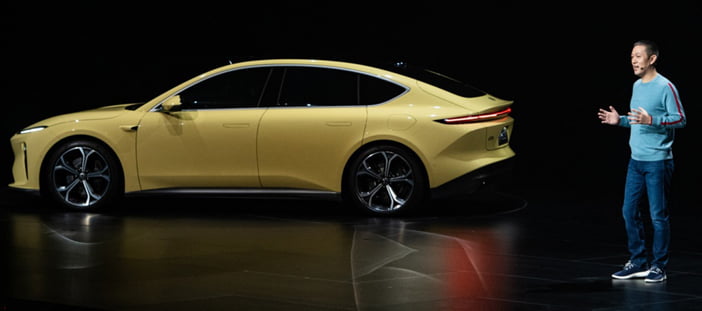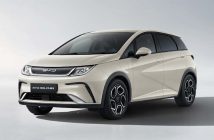+++ BENTLEY is well under way with development of the second bespoke model from its Mulliner coachbuilding division, both as a way of celebrating the luxury car maker’s venerable W12 engine and previewing the design of its first pure-electric models. The Volkswagen Group’s 6.0-litre W12 engine (the only mass-produced powerplant of this format) turned 20 years old this year, having served in a range of flagship Audi, Volkswagen and, most prominently, Bentley models. It is currently only used by the latter marque and will be retired shortly after the launch of the next Mulliner car as Bentley moves towards an all-electric future. According to a source at the Crewe firm, the new creation will be based on the Continental GT Coupé (its predecessor, the Bacalar, was based on the Convertible) but will feature bespoke styling in line with its far more exclusive build run, a unique technical make-up, heightened levels of personalisation and a far higher list price than that of the standard car. The new model is being designed and engineered in line with the expansion of the Mulliner division, which will launch the finished product in 2023, 80 years on from the start of the coachbuilder’s relationship with Bentley. It is believed that high demand for the £1.5 million Bacalar (all 12 examples of which sold out even before the first was completed) has prompted Bentley to up the build run for its hard-top successor, 25 of which will be built. It will be priced from between £1.5 million and £2 million, but the extent of Mulliner’s personalisation offering means that most, if not all, examples will sell for more than £2 million, making this Bentley’s most expensive creation yet. Power will be delivered by an enhanced version of the turbocharged 12-cylinder engine, most likely running in the same state of tune as in the Bacalar and Continental GT Speed. Peak outputs of 650 hp and 900 Nm are expected, and the Mulliner car should reach 62mph from rest in comfortably less than 4 seconds and surge onwards to a top speed in excess of 320 kph. The model is also expected to carry over the Speed’s performance-focused chassis make-up, which boasts enhanced dynamic credentials over the standard Continental courtesy of its stiffer suspension, uprated four-wheel steering system, record-breaking 440 mm diameter carbon-ceramic brake discs and electronic differential at the rear. The second Mulliner model will be marked out from its series-production range-mates by a radical styling overhaul. This will draw on elements of Bentley’s sustainability-focused EXP 100 GT concept of 2019, but with a number of bespoke cues that are likely to become hallmarks of the brand’s first pureelectric cars. A more angular and aggressive front end will be a defining characteristic, bearing a new interpretation of Bentley’s trademark grille design, slim headlight clusters and more angular air intakes. As with the Bacalar, a bespoke rear-end treatment will further differentiate the Mulliner car from the Continental GT, with slim LED lights, wide arches and prominent haunches among the cues that could make their way to electrified successors. It is understood that the second bespoke Mulliner car is the first project being led from start to finish by ex-Audi designer Andreas Mindt, who was appointed as Bentley design boss at the beginning of this year when Audi took full control of the Bentley brand as part of a drive for greater synergies between the 2 marques. His highest-profile design while at Audi was the company’s debut production EV, the e-Tron, and his work at Bentley begins as Audi ramps up development of the groundbreaking Artemis EV platform, which will underpin Bentley’s first electric car. Mindt is not a newcomer to Bentley. He was responsible for the exterior styling of the 1999 Hunaudières concept, a highly strung, W16-engined hypercar that would become one of the primary influences for the Bugatti Veyron a few years later. His radical overhaul of Bentley’s characteristic design cues will be matched by an equally outlandish interior treatment drawing on the themes of sustainability and exclusivity showcased by the Bacalar, which itself shares only its door handles and steering wheel centre with the Continental. As such, the second Mulliner car is likely to adopt a wraparound-style dashboard, drop its back seats in favour of an optional, bespoke luggage set and be trimmed with unique materials including 5.500 year old British riverwood, Scottish tweed and natural wool. +++
+++ CHINA ’s auto companies exported 1.79 million cars during the first 11 months of the year, more than doubling from the same period last year, latest industry data showed. Driven by robust outbound demand for new energy vehicles, China’s auto exports surged 59.1 percent year on year to 200.000 units in November alone, according to data from the China Association of Automobile Manufacturers. Exports of passenger cars soared 71.2 percent from a year ago to 170.000 units last month, while those of commercial vehicles rose 13 percent year on year to 30.000 units. Exports of new energy vehicles skyrocketed 189.9 percent from a year ago to 37.000 units in November. +++
+++ Despite facing lots of challenges, CHINA ’s auto market will end 3 consecutive years of negative growth in 2021, with sales estimated to reach 26.1 million units with a growth rate of 3.1 percent year-on-year, a leading industry association said last week. The China Association of Automobile Manufacturers also forecast that auto sales will reach 27.5 million units next year, up 5.4 percent year-on-year. Passenger car sales are likely to reach 23 million units next year, up 8 percent year-on-year, and commercial vehicle sales are expected to be 4.5 million units, down 6 percent year-on-year. The association adjusted its sales prediction for 2021 to 27 million in the middle of the year. Despite the good results, production fell short by 750.000 vehicles in the first 10 months due mainly to the global chip shortage, said Chen Shihua, deputy secretary-general of the association. For the whole year, the chip shortage may decrease production by 1.3 million cars, Chen said. There are many positive factors for the domestic car market, including policy support, strong overseas demand and surging new energy vehicle exports, CAAM said. Chinese passenger car brands have performed well this year and have become the main force driving market growth. In the first 11 months, there were 8.41 million Chinese-branded passenger cars sold, recording a growth rate of 25.1 percent year-on-year, and accounting for 44.1 percent of total passenger car sales. The figure increased 6.4 percentage points compared with the same period last year. The passenger cars of German, Japanese and South Korean carmakers posted year-on-year declines. The NEV sector has entered a new stage of explosive growth, CAAM noted. Data from the association showed that in November the production and sales of NEVs reached 457.000 and 450.000 respectively, up 1.3 times and 1.2 times year-on-year. From January to November, China’s NEV sales were 2.99 million units, up 166.8 percent year-on-year. CAAM forecast that new energy vehicle sales are likely to reach 3.4 million units this year and 5 million units next year, with a growth rate of 47 percent year-on-year. China Galaxy Securities reported that China’s NEV sales are expected to be around 6.11 million units in 2022, with global sales nearing 12 million. +++
+++ DAIHATSU said that all of its new models for the domestic market will be electric vehicles (EV) or hybrids by 2030. The company also said it plans to launch an electric mini-vehicle by 2025. Utilizing subsidies from central and local governments, Daihatsu aims to offer the vehicle at about ¥1 million in real terms. The plan suggests that moves to electrify mini-vehicles, which account for about 40% of Japan’s new car market, are also accelerating. “As carbon neutrality is being actively discussed, we will increase our EVs as much as possible”, Daihatsu president Soichiro Okudaira said at a press conference in Tokyo. Toyota, Daihatsu’s parent company, has announced its goal of achieving global sales of 3.5 million EVs in 2030. Daihatsu’s electric mini-vehicles are included in the 3.5 million, but Okudaira did not mention how many of them will be Daihatsu vehicles. Daihatsu has been focusing on improving the fuel efficiency of gasoline-powered vehicles, but it launched a new hybrid vehicle in November, moving forward with the shift to electrify its vehicles. Okudaira said, “People will not buy an electric mini-vehicle unless it is at the ¥1 million level, including subsidies”. Daihatsu is expected to jointly procure batteries and other parts with Toyota to reduce costs. Nissan and Mitsubishi plan to launch a jointly developed electric mini-vehicle as early as fiscal 2022. Honda and Suzuki also plan to launch an electric mini-vehicle between 2024 and 2025. +++
+++ Chinese electric car startup NIO is to make inroads into Germany, the Netherlands, Sweden and Denmark in 2022. The New York-listed company announced the plan when it held the annual Nio Day event. Nio started its global expansion in 2021 with Norway as the first stop. It has launched its flagship ES8 in the country, with its sedan, the ET7, to follow in 2022. “By 2025, Nio will establish its presence in over 25 countries and regions worldwide”, said the carmaker. Nio is one of the bestselling EV startups in China, with over 10.000 vehicles sold on a monthly basis. The company also unveiled its fifth model, the mid-size ET5 sedan, at the Nio Day event. Priced at 328,000 yuan ($51,463), it is believed to take on Tesla’s popular Model 3 sedan, said analysts. Among other things, the ET5 comes with Nio’s latest autonomous driving features, which will enable the model to drive automatically in scenarios such as highways, urban areas, parking and battery swapping. Nio is scheduled to deliver the ET5 in September 2022. It will deliver another sedan, the bigger ET7, in March 2022. William Li, Nio’s founder, chairman and CEO, said, “The year of 2021 is full of challenges. With a positive and optimistic attitude and outlook, Nio has grown together with its users”. The startup delivered 80.940 vehicles in the first 11 months this year, representing a strong increase of 120.4 percent year-on-year. “In 2022, we will continue to double down on product and technology development, accelerate the deployment of our service network, and enter more markets globally. We are confident about the road ahead”, Li said. +++

+++ TOYOTA will reduce its domestic vehicle production further in December due to difficulties in procuring parts from Southeast Asia, among other reasons, according to officials of the leading Japanese automaker. Toyota newly decided to halt the operations of 6 plants in Japan for up to 5 days this month, a move that will boost the number of affected vehicles by some 8.000 units to a total of around 22.000 units, the officials said. The company had already decided to partially suspend the operations of four domestic plants, reducing vehicle production by about 14.000 units. The output cut will be expanded as parts shortages have not been resolved. Meanwhile, officials of Honda said the automaker’s Suzuka plant in Mie Prefecture, central Japan, will be operated in December at a level some 10 percent less than its initial plan. +++
+++ At long last, TOYOTA unveiled its electrification campaign last week, but its plan to roll out the first EV in 2022 shows the world’s largest carmaker is still lagging behind the rest of the market. At an online event last week, Toyota said it will launch 30 EVs by 2030, expecting their sales in the year to reach 3.5 million, or around one-third of its current vehicle sales. That is less than rivals such as the world’s No 2 carmaker Volkswagen, which in July predicted that half of its global vehicle sales will be electric cars by the same year. Toyota did not offer details about its plans in major markets including China and Europe, where electric cars are fast becoming serious challengers to internal combustion. In China, deliveries of electric cars and plug-in hybrids reached 2.51 million units in the first 11 months, roughly 14 percent of total passenger vehicle sales in the same period. Ouyang Minggao, an automotive professor at Tsinghua University, said they are likely to account for 20 percent of total vehicle sales in 2022. Toyota CEO Akio Toyoda said his company was still pursuing a multi-pronged, carbon-reduction strategy that also includes hybrid cars and hydrogen-powered vehicles. “We want to leave all people with a choice, and rather than where or what we will focus on, we will wait a little longer until we understand where the market is going”, Toyoda said. In November, Toyota declined to join a pledge signed by 6 major carmakers, including General Motors and Ford, to phase out fossil fuel cars by 2040, arguing that not all parts of the world would be ready to transition to green cars by then. GM, the largest carmaker in the United States, is rolling out 30 electric cars by 2025. The company will stop producing gasoline-powered light-duty vehicles from 2035, said CEO Mary Barra back in January. Tesla’s Shanghai plant produced over 400.000 vehicles in the first 11 months this year. European carmakers are equally (if not more) aggressive in their path toward electrification. The Volkswagen Group is offering several ID.series models in the market. In its largest market of China, the German carmaker is selling 5 models this year, with their monthly sales hitting over 10.000 units. British premium carmaker Jaguar is going electric by 2025, and Volvo will be producing only electric vehicles from 2030. Daimler’s Mercedes-Benz said it will only sell electric vehicles “where market conditions allow” from 2030. It is selling 3 China-made electric models, with another one to join in 2022. Toyota is even not as resolute as its Japanese rivals when it comes to electrification. Honda unveiled its plan in October, saying it will launch 10 electric car models in China in 5 years. The first 2 models, which will be SUVs, will go on sale from early 2022 at its 2 joint ventures GAC Honda and Dongfeng Honda. The carmaker said the 2 joint ventures will build dedicated electric car plants which are scheduled to start production in 2024. The Japanese carmaker also said it will no longer introduce any new gasoline-powered models in China after 2030, which means all new models will be electric cars and hybrids. Late last month, Nissan said 40 percent of the vehicles it sells in China would be electrified by 2026. The figure would be 75 percent in Europe and 55 percent in Japan by the same year. In the United States, the figure would be 40 percent by 2030, said the third-largest carmaker in Japan. The carmaker will invest up to 2 trillion yen ($17.59 billion) over the next 5 years to accelerate the electrification of its vehicle lineup and rate of technology innovation. The investment will enable Nissan to introduce 23 electrified models, including 15 electric cars, by 2030. They would help Nissan reach an electrification mix of more than 50 percent under its namesake marque and premium arm Infiniti. +++
+++ Herbert Diess, Chief Executive Officer of the world’s second largest carmaker VOLKSWAGEN , has called for more cooperation with China, saying the carmaker will not keep pace with innovations if it does not face the competition in the Chinese market. “We need more cooperation and presence in China, not less”, said Diess in his social media account. “It would be very damaging if Germany or the EU wanted to decouple from China”, he said. Diess said Volkswagen is a global company and it will not stop advocating for globalization, a multi-lateral rules-based trading system and engagement. China is Volkswagen’s biggest market worldwide. In the first 3 quarters this year, its deliveries in the country reached 2.55 million units, over 35 percent of its total sales globally in the same period. Total vehicle sales in China would reach 26.1 million this year, up 3 percent from 2020, according to the China Association of Automobile Manufacturers. Electric cars and plug-in hybrids are highlights. Their combined sales are expected to hit 3.4 million units this year in China and 5 million in 2022, said the CAAM. Diess said Volkswagen has significantly raised its NEV sales target in China in 2022. It has launched the electric ID.3, ID.4 and ID.6 models in the country and is planning to introduce more. He said the carmaker is changing its marketing, 80 percent of which is now on social media, in an effort to attract the younger customers who are showing more interest in local Chinese startups. Volkswagen is also partnering with Chinese companies including battery maker Gotion to sharpen its competitive edge. Headquartered in Hebei, Anhui province, Gotion will help produce battery cells at Volkswagen’s plant in Salzgitter, Germany, with production expected to start in 2025. The battery maker will serve as a technology partner “for the cell factory layout, machinery and production processes”, said Volkswagen in a statement earlier this year. Gotion, with Volkswagen as its largest shareholder, will supply batteries for the carmaker’s plants in China as well. Volkswagen unveiled in July this year a campaign called New Auto that focuses on electrification, autonomous driving and software-driven mobility. “We have to use the Chinese speed and local technology platforms to remain worldwide relevant in New Auto”, said Diess. +++



